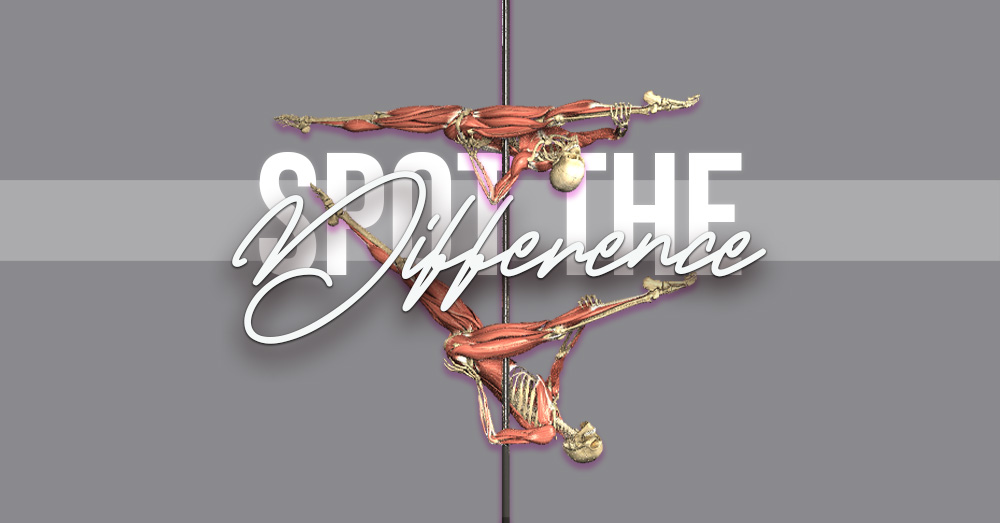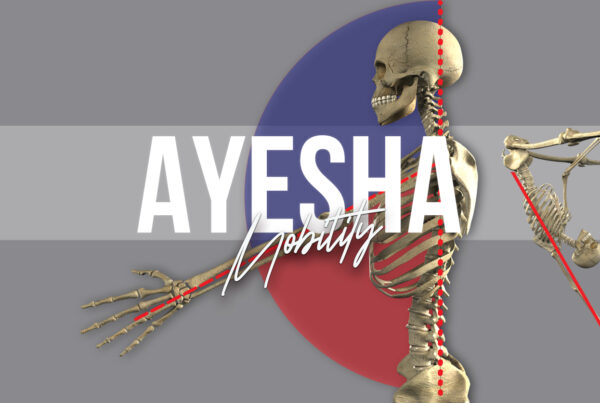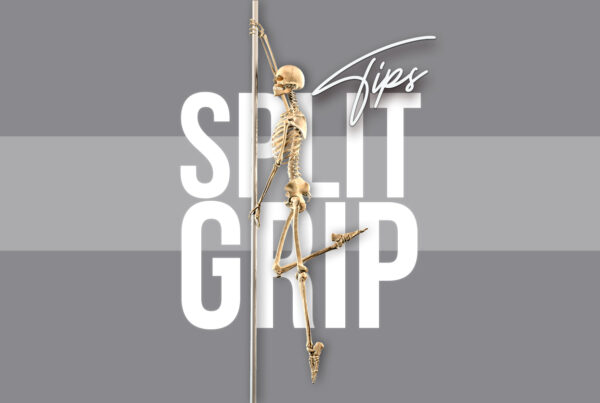
Firstly, let’s pause to tip our hats to both of these Jades!
While the ‘lines 4dayz’ of Jade A tends to be the holy grail of every #pdjade mission, let me say this unequivocally, in case you’re in any doubt:
Both of these Jades are AWESOME!
The Jade Split requires a high level of flexibility, strength, skill – and a generous sprinkling of that patented pole dance badassery!
This is true for both variations.
Whether your Jade looks a little more like Column A or a little more like Column B depends on a multitude of factors, but if you’re looking for ways to experiment with the lines and angles of your Jade, I got you!
This blog highlights some of the key elements that can impact our Jade “lines”.
Rather watch than read? Nay problem! You can watch the video summary of this blog post below:
Difference #1: Angle of the body in relation to the floor
Here’s the first difference I see from this view of the Jade: although the back leg looks roughly inline with the torso in both variations, the angle of that line from the floor is much more diagonal in Jade B, whereas in Jade A it is much more parallel to the floor.

With the power of Photoshop, if we simply toggle Jade B so the skelly is more ‘parallel’, without changing any other elements of the dancer’s positioning (if only adjustments were this easy IRL, right!), we can see that we would lose the grip points on the inner thigh and inside arm.
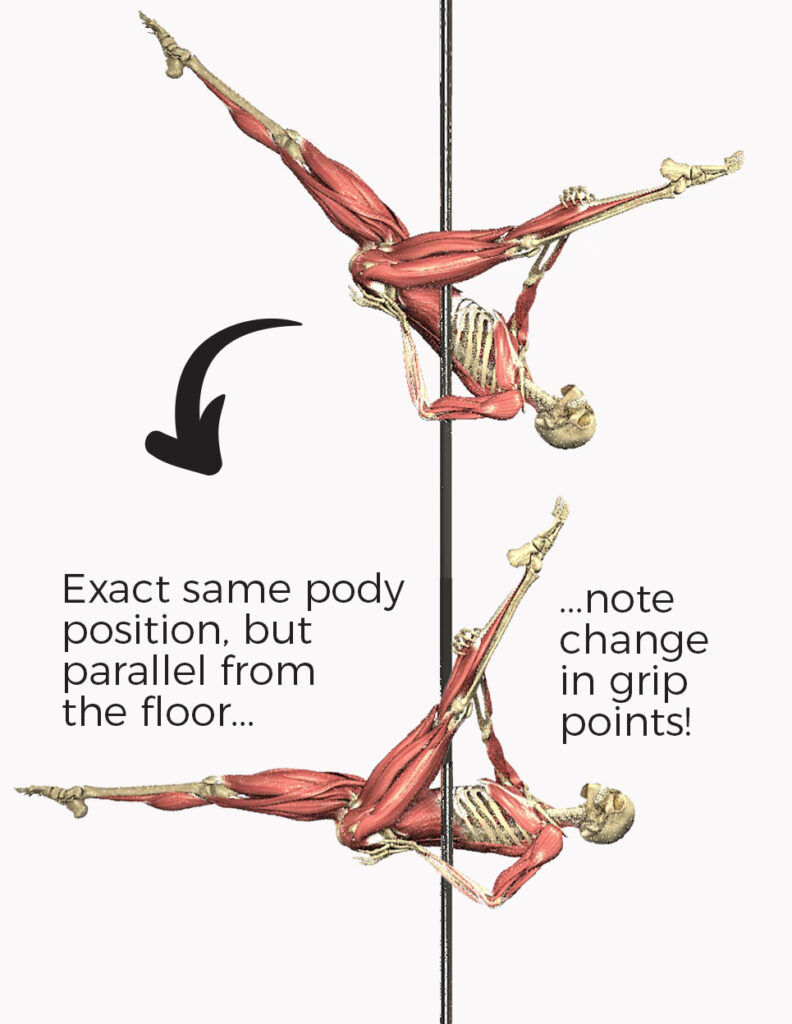
Hmmm. So the angle from the floor is clearly only a part of the Jade line puzzle!
Let’s keep digging…
Difference #2: Amount of hip flexion
The angle between the torso and the front leg looks much bigger in Jade B.
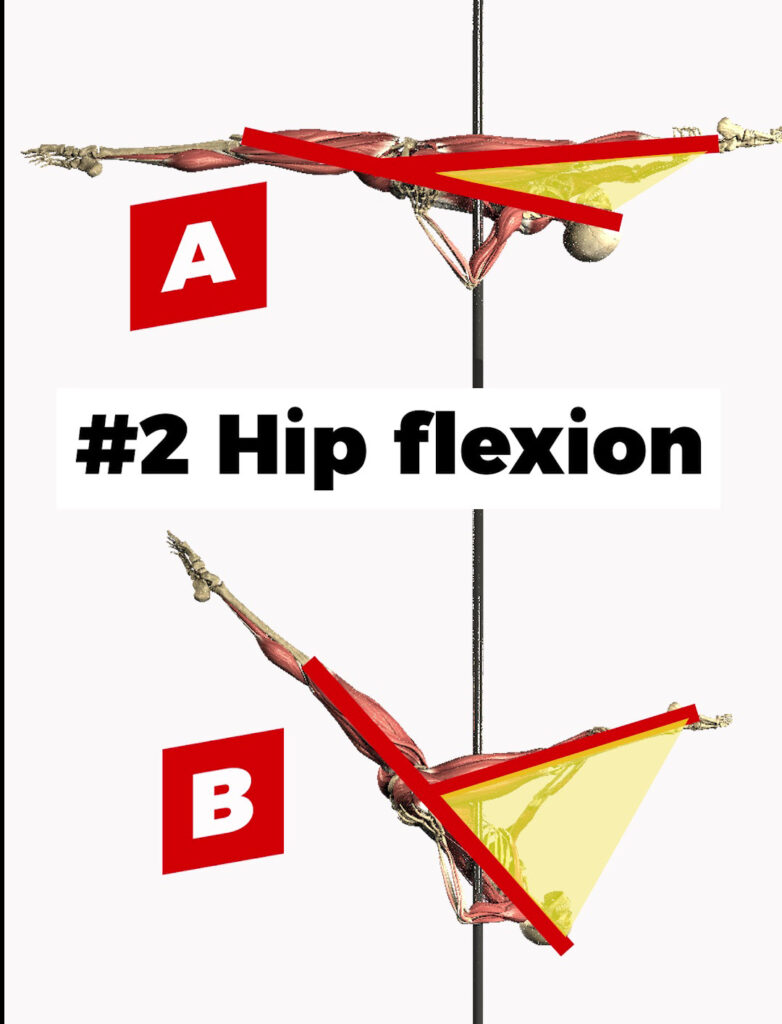
This suggests the dancer in Jade A is bringing their front leg into a greater range of hip flexion. We know that hip flexion is important for the front leg position in any ‘front split’ based trick, right? So, it makes sense that a better range of hip flexion (hamstring flexibility and hip flexor strength) = more advanced split lines.
But we’re still not seeing the whole picture here.
Difference #3 Pelvis position
If we look a little closer, I spy a little more of the dancer’s back butt cheek in Jade A! But to find out why, we need to see the Jades from a different angle…
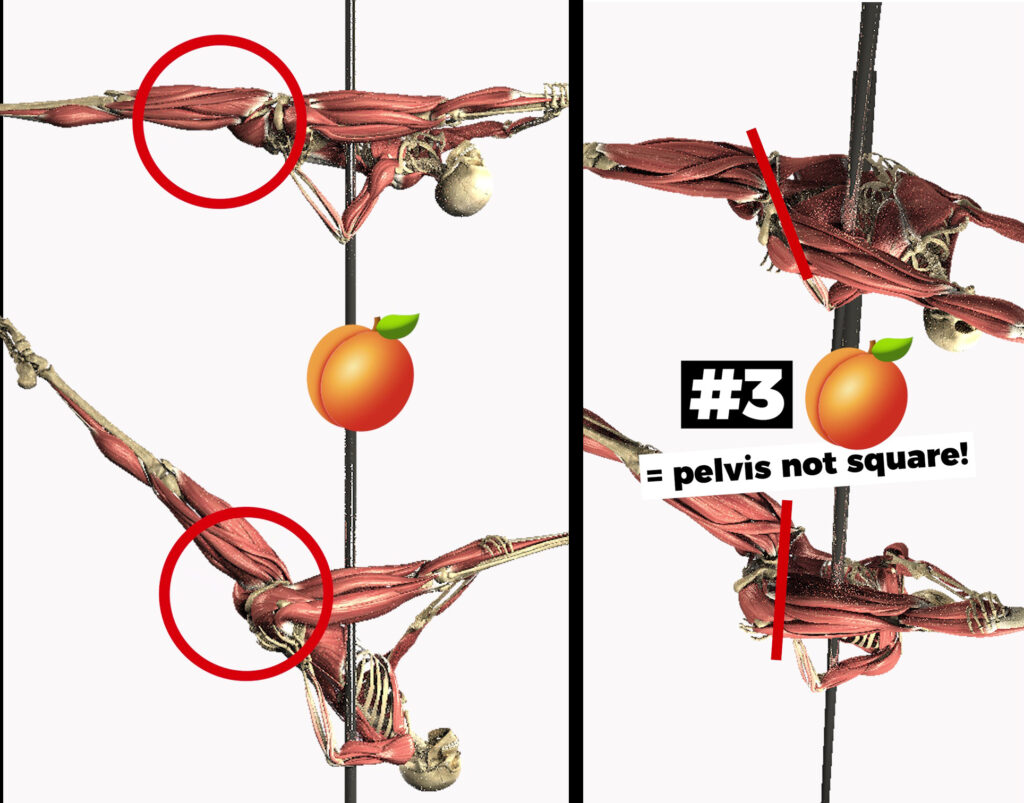
From above, we can see that in Jade A, the dancer’s pelvis is rotated much more (in the frontal plane) – that’s why we can see a little more of that back butt cheek peeking through from the front angle!
This pelvis position in the ‘frontal plane’ is also part of…
Difference #4: Amount of side bend
Probably one of the most noticeable differences between the two Jade variations from above is the amount of side bend in Jade A compared to Jade B.

This lateral spinal flexion is one of the key elements which allows the dancer to maintain contact points on the pole while bringing their body more parallel to the floor (see Difference #1).
Difference #5: Amount of hip abduction
From above, we can also see that the inside leg looks to be a little further away from the dancer’s midline in Jade A in comparison to Jade B.

Increasing hip abduction like this will shift the flexibility demands a little more to the hip adductors and medial hamstrings.
Interesting!
But we’re still not seeing all sides of this story.
Difference #6: Arm positioning
When we look at our Jades from ‘behind’, what else can we see?
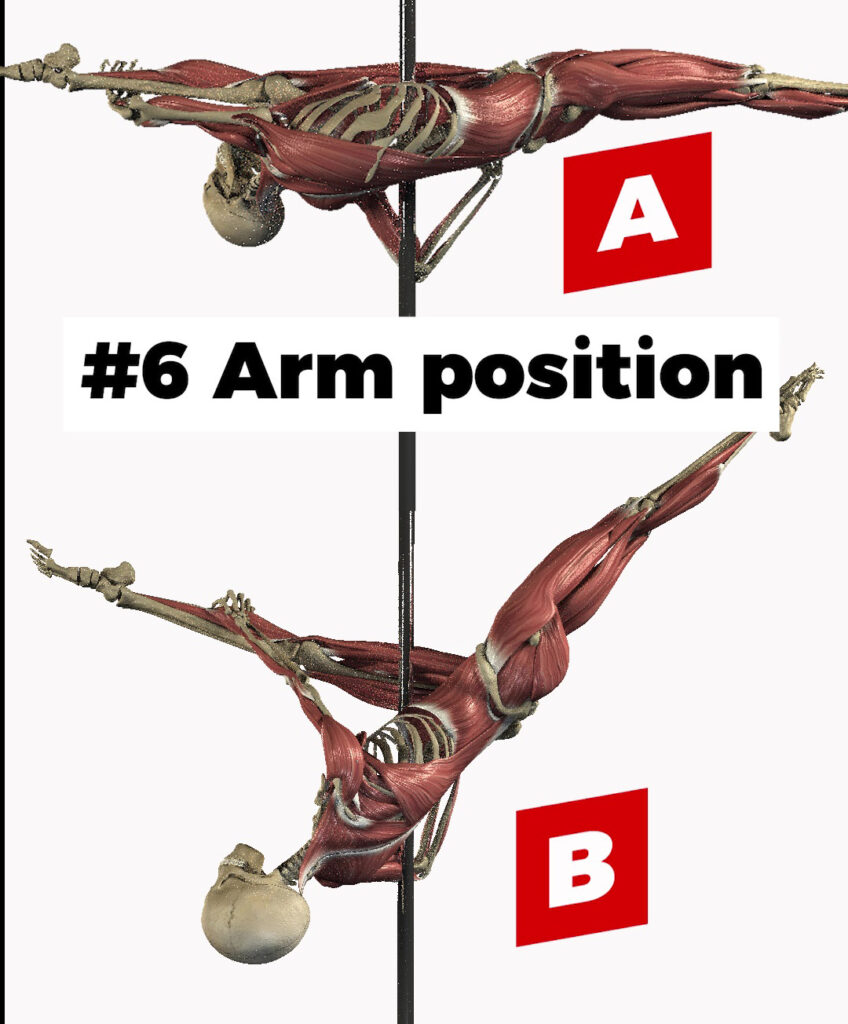
Firstly, the arm positioning in Jade A is much more overhead – and the forearm is pronated, but there is a much more subtle difference to see from this angle, if we look closely…
Difference #7: Amount of Spinal rotation
In both Jades, the dancer’s chest is facing slightly towards the front leg. In Jade B, the dancer’s pelvis is facing that way too, whereas in Jade A, the dancer is turning their pelvis a little more towards the ceiling.

Okay, playing Spot the Difference has been fun and all, but what does all this mean for my Jade split?
Analysing the movements of pole dance like this is not just nerdy fun with animations, it gives us little clues.
Exploring these areas in our own strength, mobility and skill practice helps us play around with the #pdjadesplit shape itself. More importantly, it can help us understand not just the areas we might need to work on in our own skill and strength training, but it can also highlight the areas we might overrely on in our movement practice.
We’re all different, with our own unique strengths. And because we’re human, we tend to ‘lean in’ to our strengths, so if your lateral spinal flexion (side bending) mobility and strength is killa, you might be able to use that strength to achieve the Jade lines that dreams are made of, whereas another dancer might rely more heavily on spinal rotation or hip flexion.
The aim is not just just to improve your Jade split, but to understand more about your own movement patterns, strengths and weaknesses in the process of this exploration – and ultimately to move and train more intentionally. That’s what will help make us all stronger, more resilient polers for the long haul!
What clues can you take from your own Jade positioning? And how can you use these clues to direct your own training? < This is what it’s all about for me!
Thanks for playing with me! Got questions? Lemme at em!
Want more pole nerdiness?
Enjoy nerding about the anatomy of pole? I think you’ll love my book, Pole Anatomy!
Want to know how to strength train for pole? My book Strength and Conditioning for Pole is the one!
Both books are available in paperback and ebook format!


